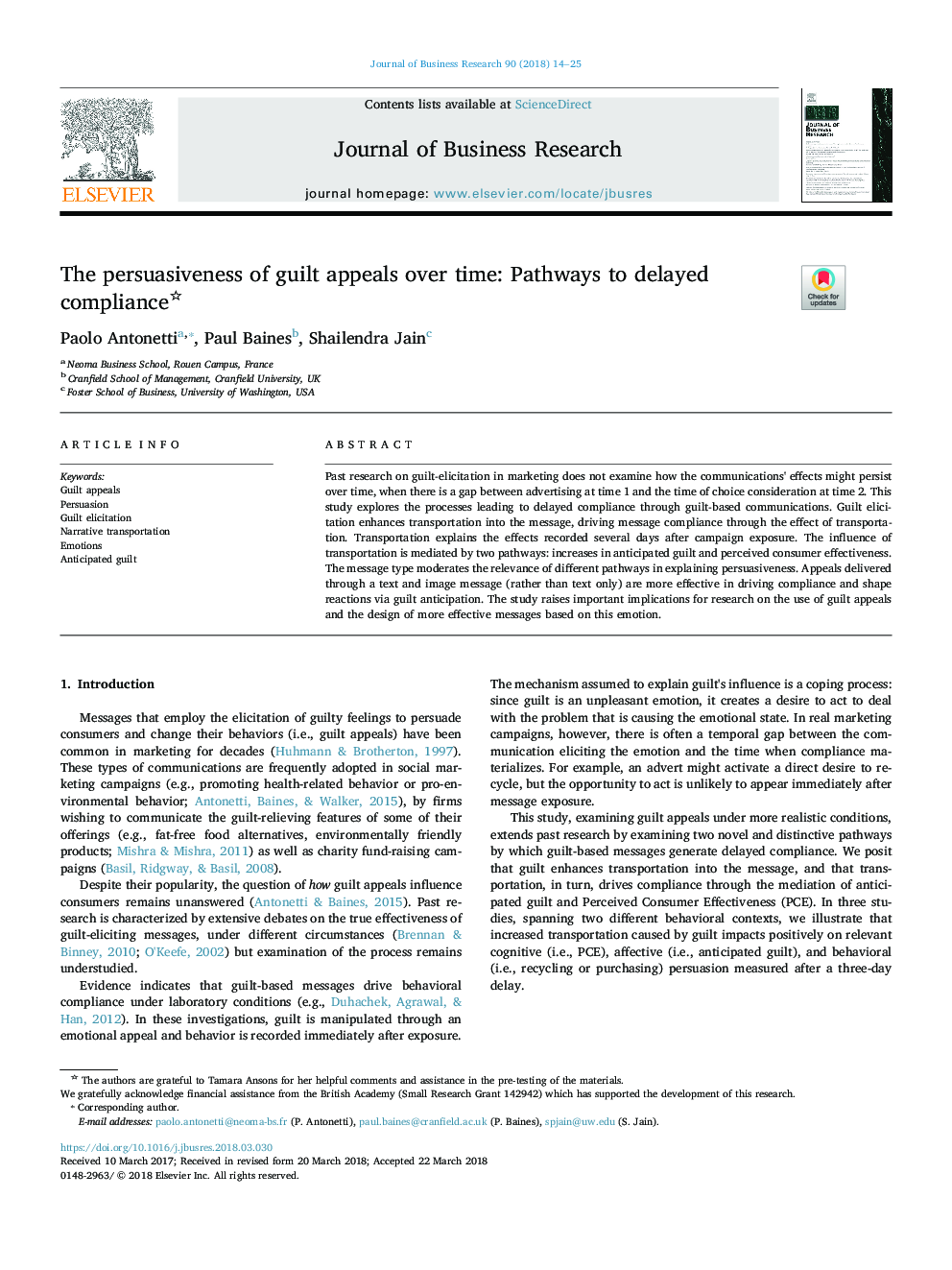| Article ID | Journal | Published Year | Pages | File Type |
|---|---|---|---|---|
| 7424819 | Journal of Business Research | 2018 | 12 Pages |
Abstract
Past research on guilt-elicitation in marketing does not examine how the communications' effects might persist over time, when there is a gap between advertising at time 1 and the time of choice consideration at time 2. This study explores the processes leading to delayed compliance through guilt-based communications. Guilt elicitation enhances transportation into the message, driving message compliance through the effect of transportation. Transportation explains the effects recorded several days after campaign exposure. The influence of transportation is mediated by two pathways: increases in anticipated guilt and perceived consumer effectiveness. The message type moderates the relevance of different pathways in explaining persuasiveness. Appeals delivered through a text and image message (rather than text only) are more effective in driving compliance and shape reactions via guilt anticipation. The study raises important implications for research on the use of guilt appeals and the design of more effective messages based on this emotion.
Related Topics
Social Sciences and Humanities
Business, Management and Accounting
Business and International Management
Authors
Paolo Antonetti, Paul Baines, Shailendra Jain,
